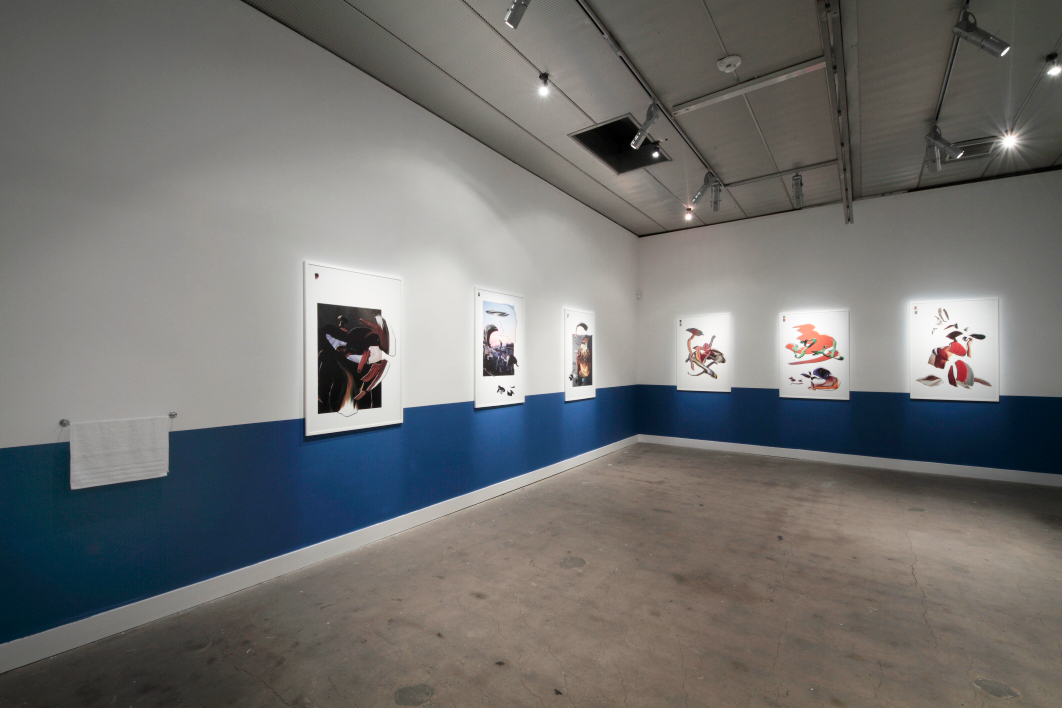FINDING A PLACE FOR PAINT IN A POST-INTERNET WORLD, ROBERT LUKINS TALKS SITE-SPECIFICS WITH ABOUT BLANK ARTISTS PARKER ITO AND RY DAVID BRADLEY.
When a culture is being made and defined in a hailstorm of hypertext, cursor gestures and commercially-utilitarian images, the place of the stand-alone artwork is being constantly redefined. Where once the internet may have been used to make reference to an image, to spruik an exhibition of a physical disposition, it is now seen as canvas, showroom, and curator to a generation of art-makers who feel unconfined by the rabbit fence traditionally erected between the online and offline realms. Curated by Sean Irving and Nina Renee, ABOUT BLANK is an exhibition of works by California's Parker Ito and Melbourne's Ry David Bradley, revolving around the question of interplay between painters and the screen.
Bradley considers a link to the traditions of painting as unavoidable, and that contemporary arts' heightened awareness of its sources means an artist is hesitant to proclaim their work as something brand new or anti-traditional. He see shadows of the past. "Art these days may be like a version of the Modernist urge to reflect our experience of life in relationship to technological change, possibly with less of the macho posturing, and more embracing of some of its failures."
One of the byzantine matters thrown up by the mechanisms of the internet as a place for art is the complexity of ownership and the challenge this presents to the selling of work. Ito sees this playing out around him. "This is a big issue that scares a lot of collectors and this is one of the reasons why I make objects. A lot of people are trying to figure that out. I've sold a .jpeg before and I have a couple of friends who make websites and they sell them to collectors."
Bradley regards this as the regular extension of what has come before. "I don't think it's a whole lot different to problems that artists have always had regarding who came up with what, who made what, etc. Perhaps the internet still has no direct commercial economy for most of its artistic producers, but through its massive communities it has a great effect on what does or will have value down the chain."
In describing the role of the internet in art, both as an agent of production and of distribution, Bradley and Ito make it clear that any easy answers will not tell the full story. The mass production of tube paint is a mirror to the ubiquity of computer programs. There are no convenient boundaries - there is no simple then and now. Bradley suggests a commonality of theme within the exhibition. "Parker explores his position as an artist who can outsource production of paintings, to reflect a particular concern of his with iconic features of our plural world culture. It's something we both seek. Ideas have always been important since the dawn of time, and the internet is perhaps better than anything ever has been for their dispersal."
"The internet is super ugly," Parker states in succinct conclusion, "that's why it's so beautiful".
- Robert Luckins |

